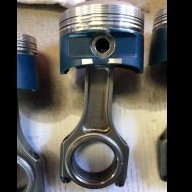Announcements
-
Similar Content
-
Latest Posts
-
Saw this replica police car based on a Mitsubishi Starion XX parked next to a 'police box' (it's literally a box) in Hirohata, Himeji City in Hyogo prefecture the other day. It's owned by Morii-san who is a local Mitsubishi Starion enthusiast. According to a local radio station blog post, he always wanted to make a police car himself based on ones he saw in his favourite Manga comics. As it's illegal to modify a car to look like a police car and drive on the road, Morii-san tried many times to get permission from Aboshi police station headquarters nearby. They refused initially by after they got tired of that they granted him permission. However, the car can only be displayed on private property and obviously can't be registered as long as the police livery is present. The car was completed at a cost of 1.5 million yen (US$ 10,000) in addition to the car cost. A location was chosen outside Hirohata Police box where the car can easily been seen from the street. Morii-san has two other Starion road cars, both widebody GSR-VRs.
-
By Murray_Calavera · Posted
Ah coolant overflow, previous discussions make way more sense now lol. -
ok. Yea, then I would need to remove the turbo and weld an adapter on to it instead, if I fuc* this one up.
-
No. Only for a standard ECU with/without Nistune. Standalone has no need for it. That's like the 3rd time I've said so. And as to that sensor linked - yes, it does look like it would be the right one. I've never bothered to see how available they were - just assumed that they'd be hard to find. I think I'd be planning to go Link ECU rather than buy sensors I don't actually want to make Nistune work, if I did not already have Nistune. As you do not already have Nistune, you should realy consider your options.
-




Recommended Posts
Create an account or sign in to comment
You need to be a member in order to leave a comment
Create an account
Sign up for a new account in our community. It's easy!
Register a new accountSign in
Already have an account? Sign in here.
Sign In Now